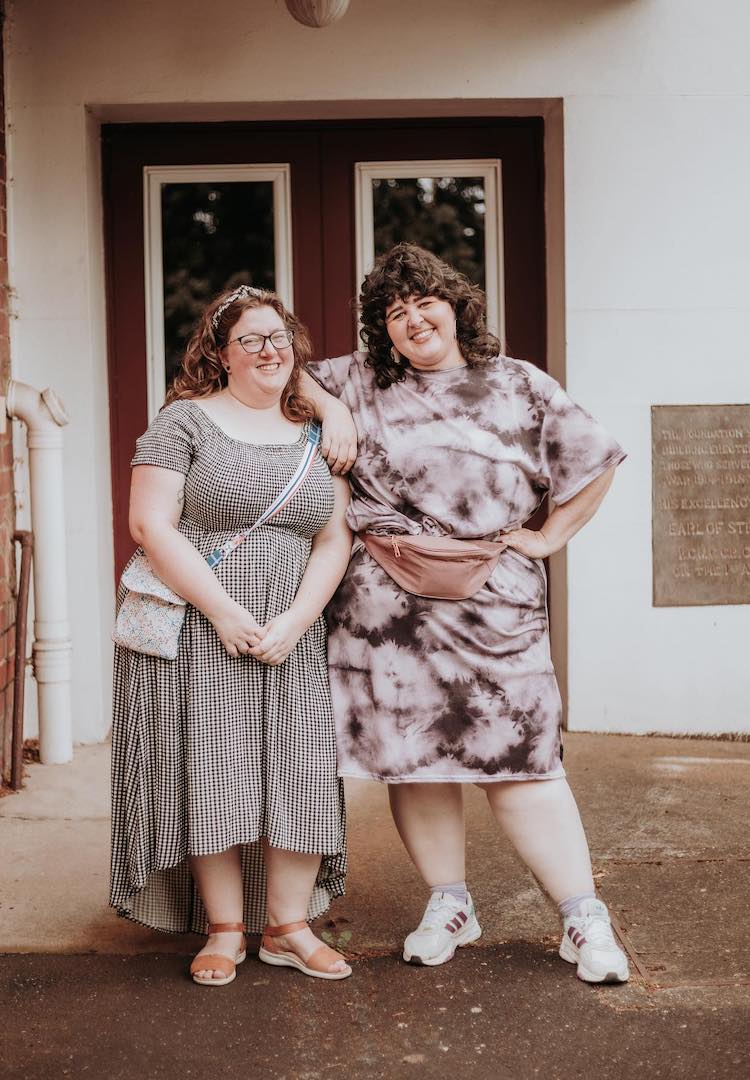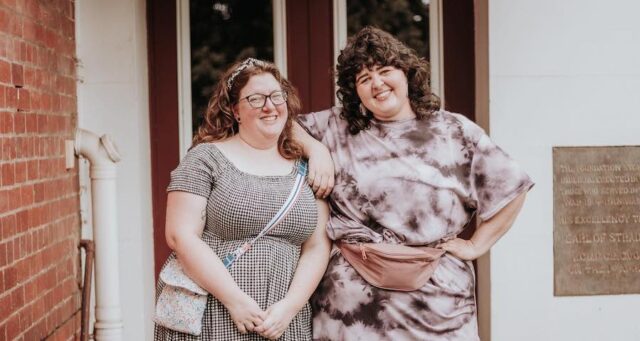
The experience of being a plus-sized fashion lover is one of gradually sizing out things other fashion girlies take for granted – and I don’t just mean clothes that fit.
First, it’s the ability to shop in-store. In my experience, if my size exists in a brick-and-mortar store, it has its own hidden rack and often a separate range, but more likely, it must be purchased online, with all the confusing size guides, postage and inevitable returns that go with that – part of what’s known as the ‘fat tax’. You’ll be lucky if you see a model on the brand’s website that looks anything close to your size, too.
For more fashion news, shoots, articles and features, head to our Fashion section.
But it goes further. At a time when many of my millennial mates are finally earning enough to invest in responsibly-made garments, I seem to have been sized out of wearing my values. I want to be a more conscious fashion consumer, and to reduce my footprint where I can. But since many responsibly-produced labels don’t cater to my size, how can I participate as an ethical fat fashion lover?
Recently, I posed the question to two fashion experts and asked them how they do it. Alexcea Apostolakis works as a studio assistant for a slow fashion brand based in Melbourne. When I speak with her, she’s wearing a dress she’s owned for six years. She loves it, so she’s found ways to hold onto it and re-style it within her wardrobe. She says her usual go-to for clothes shopping is to thrift first, “when I have time,” she adds. “Obviously it’s kind of laborious.”
Because there’s a scarcity of plus size clothing overall, even in op shops, Alexcea encourages thrifters to alter items you’re yearning for but not seeing in your size.
“Don’t shy away from tailors! You can still have that thrifting experience, maybe you just need to put some extra fabric somewhere, that’s fine. Don’t feel weird about it. Or the other way around, you might find something and need to have it taken in. But that’s also not to say if you’re a size 10, you should buy a size 18 and get that taken in… Please don’t do that,” she laughs. “Leave that for the size 18s.”

Alexcea Apostolakis, writer, artist and studio assistant.
Model and content creator Annika Nielsen agrees that op shopping is her first love, too. A few months ago, she’d have estimated to be buying 80 per cent pre-loved and 20 per cent new. However, she was feeling uncomfortable.
“When we think of fast fashion, yes, it’s the brands but it’s also the rate of our consumption,” she explains. “So you can be fast fashion-ing at the op shops. I found myself saying, ‘Ooh, this is a really good brand, I’ll just get it’, or ‘Oh this is a dollar, I’m just going to get it’, or ‘I can do something with that…’ And then I found myself re-donating things with Vinnies tags on them to the Salvos.”
These days, Annika’s wardrobe is closer to half pre-loved and half new, but now she truly thinks about the items she’s investing in, with the top choice being from small, sustainable businesses. But having the time and money to make those investment pieces is a privilege, which Annika fully owns. Her partner’s wage covers their basic needs, meaning she’s “able to think about things, things that are two hundred to three hundred dollars. That is a major purchase but I’m still able to do it, after thinking about it for a while.”
View this post on Instagram
If your access to clothing (for reasons including income and sizing) means these investments aren’t an option for you, there are still ways to be responsible owners of clothing, no matter how or where it’s produced.
Where to from here?
It feels easier to identify the problem than it does to solve it. While a shortage of supply means that ethical fashion for plus-size folks is hard to come by, more responsible choices are possible. And, some of the principles of building a values-led wardrobe are universal.
Shop your wardrobe first
The most sustainable garment is one you already own, so shop from your closet first. “We often think of ‘sustainable wardrobes’ as what we can add to our collection, when realistically you already have a closet full of stuff,” says Annika. “Wear it, take care of it, learn how to wash it. Focus on what you do have versus what you can get.”
Hit the pre-loved spots
Shopping pre-loved, especially in person, helps lessen the uncertainty and waste of online shopping. It’s already shipped, you’ve got the opportunity to try it on in person, and you can feel the quality of the fabric on the spot. You’re giving another babe’s hard-won piece a new lease on life. Try events like A Plus in Melbourne (full disclosure: I run that one, it’s great), Radically Soft in Sydney, or DBL in Adelaide.
Consider investing in slow fashion
Everything I’ve just said tells you how rare plus size options are, but they do exist, and I’m hopeful that the more we show there’s a demand, the more designers will see it’s good business to expand their sizing. Alexcea recommends Variety Hour, Sully’s and Ruby, while Annika’s favourites are Less Common, Sanct, and Patience Made.
It’s a shock to learn that a $10 fast fashion top costs the same as a slower-produced $100 top when you do the maths on cost-per-wear, because the cheaper one will likely last a tenth of the time before it falls apart. The more expensive option, if picked well, will not only feel a lot better while you’re wearing it, but also wash and wear better over time. And when it does start to wear seriously, mending and repurposing will remain viable options because of the material and production quality.
Fat liberation advocate Ragen Chastain often says of anti-fat bias that it’s not our fault, but it is our problem. That is, plus-size people aren’t to blame for the problem of stigma, which blocks access to proper care and participation, but we absolutely have to live with its consequences. This seems like a reasonable approach to fat fashion, too: making the best choices that are accessible to us, even as we advocate for extended sizing and more equitable access to options for all bodies.
For more on ethical fashion, try this.
This article Why don’t ethical fashion brands want to dress me? appeared first on Fashion Journal.
2025-03-26 07:49:00
#dont #ethical #fashion #brands #dress
Source link
















